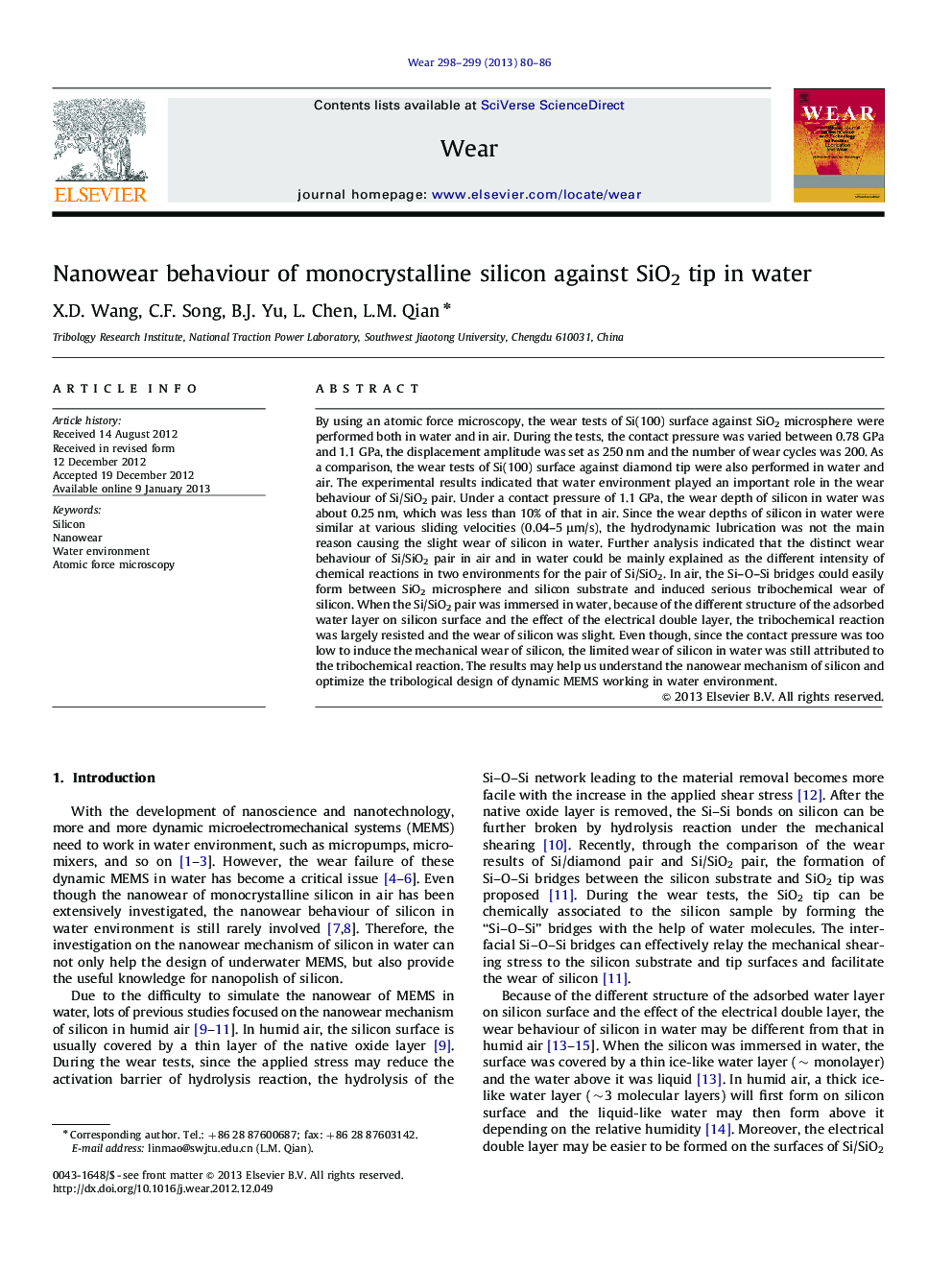| کد مقاله | کد نشریه | سال انتشار | مقاله انگلیسی | نسخه تمام متن |
|---|---|---|---|---|
| 617790 | 1455003 | 2013 | 7 صفحه PDF | دانلود رایگان |

By using an atomic force microscopy, the wear tests of Si(100) surface against SiO2 microsphere were performed both in water and in air. During the tests, the contact pressure was varied between 0.78 GPa and 1.1 GPa, the displacement amplitude was set as 250 nm and the number of wear cycles was 200. As a comparison, the wear tests of Si(100) surface against diamond tip were also performed in water and air. The experimental results indicated that water environment played an important role in the wear behaviour of Si/SiO2 pair. Under a contact pressure of 1.1 GPa, the wear depth of silicon in water was about 0.25 nm, which was less than 10% of that in air. Since the wear depths of silicon in water were similar at various sliding velocities (0.04–5 μm/s), the hydrodynamic lubrication was not the main reason causing the slight wear of silicon in water. Further analysis indicated that the distinct wear behaviour of Si/SiO2 pair in air and in water could be mainly explained as the different intensity of chemical reactions in two environments for the pair of Si/SiO2. In air, the SiOSi bridges could easily form between SiO2 microsphere and silicon substrate and induced serious tribochemical wear of silicon. When the Si/SiO2 pair was immersed in water, because of the different structure of the adsorbed water layer on silicon surface and the effect of the electrical double layer, the tribochemical reaction was largely resisted and the wear of silicon was slight. Even though, since the contact pressure was too low to induce the mechanical wear of silicon, the limited wear of silicon in water was still attributed to the tribochemical reaction. The results may help us understand the nanowear mechanism of silicon and optimize the tribological design of dynamic MEMS working in water environment.
Journal: Wear - Volumes 298–299, 15 February 2013, Pages 80–86